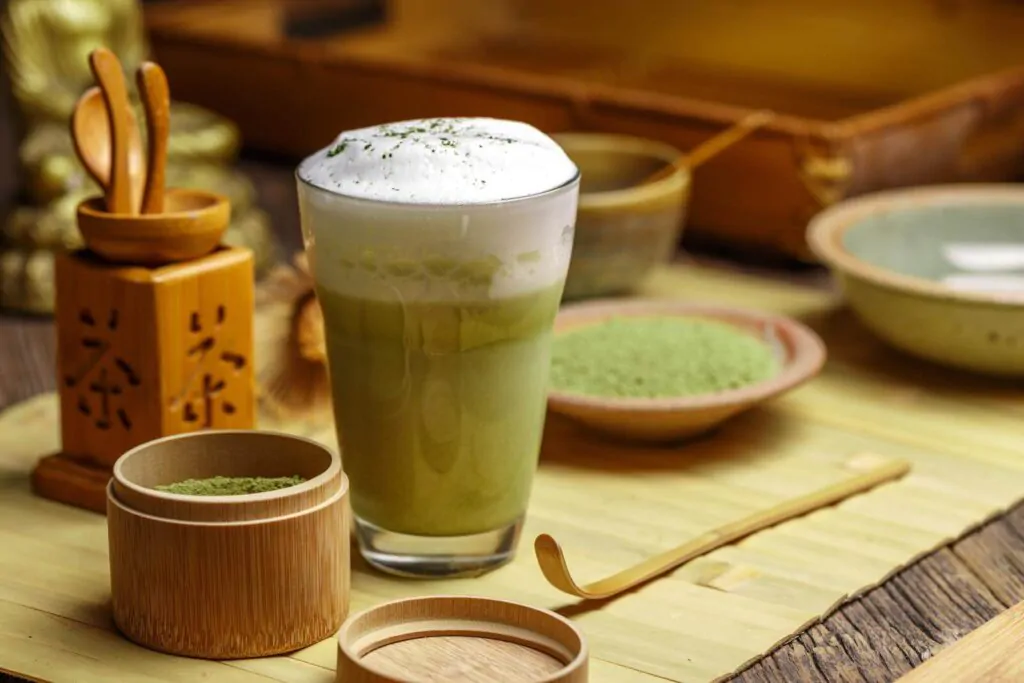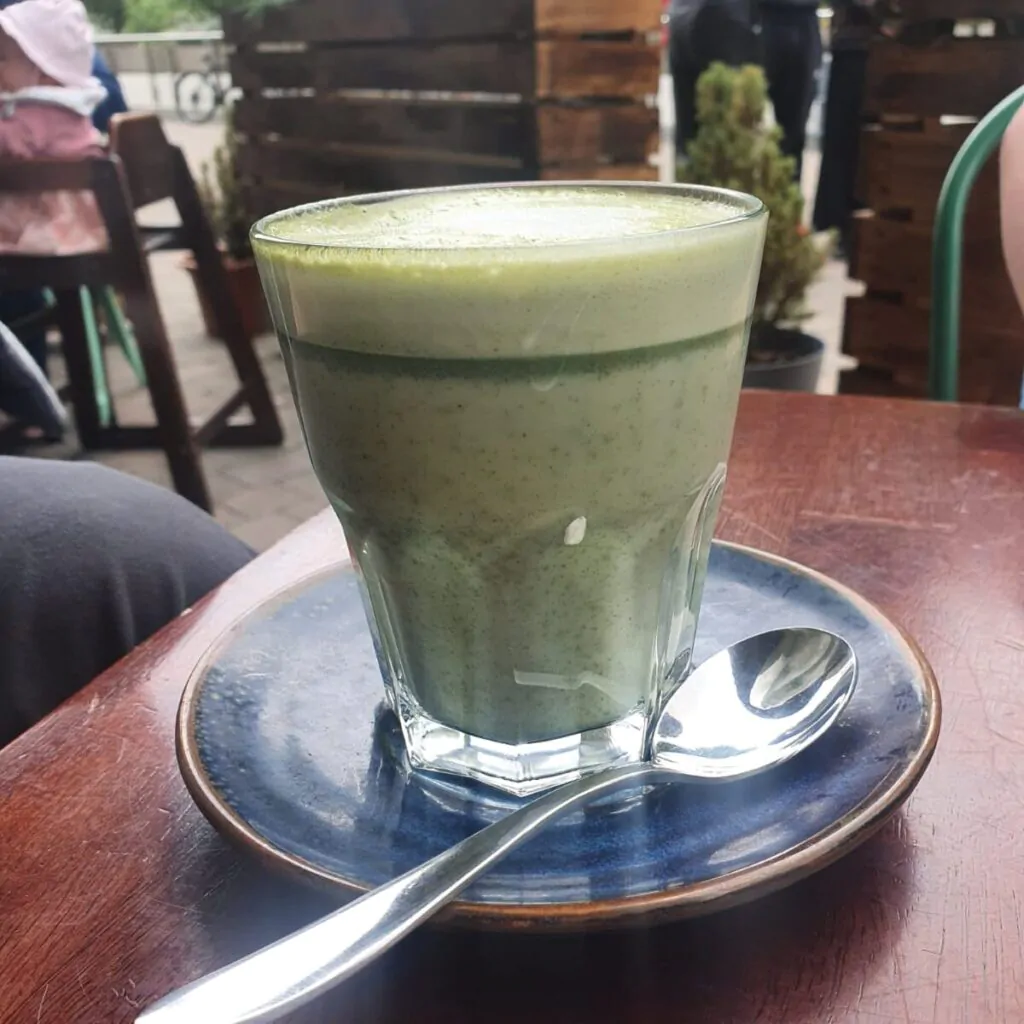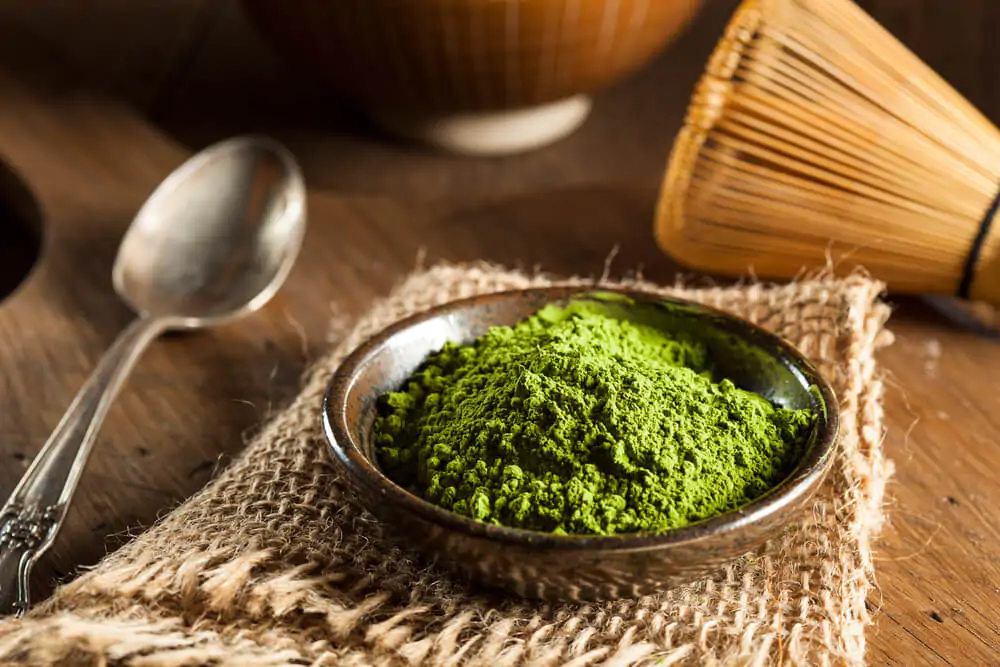While green tea has long been known to be a part of a healthy diet, another type of green tea is steadily gaining popularity — matcha. So, is green tea matcha? Keep reading to find out.

Matcha is a type of green tea made by harvesting younger tea leaves and grinding them into a powder. This powder is whisked with hot water, which means you consume the whole leaf. However, this is not the case with regular green tea, where the tea leaves are removed after steeping, so matcha is considered healthier than green tea.
Green tea and matcha are sourced from the Camellia sinensis plant, but they are two different beverages. Although they are both green teas, their flavor profiles, color, cultivation, and preparation methods are quite different.
Many tea lovers enjoy both green tea and matcha, while others prefer only one of these two beverages. Keep reading to learn more about the differences between green tea and matcha, and find out which one may best suit your taste preference.
What Is Green Tea?
Green tea is made when steeping the Camellia sinensis leaves. Green tea leaves are typically steamed or pan-fried to stop oxidation and maintain the color and mild, grassy flavor. You’ll love our round-up of the best Japanese green tea brands.

Green tea originated in China but nowadays it is also cultivated in other Asian countries like Japan, Korea, and Vietnam. There are dozens green teas — including matcha.
How To Make Green Tea
The perfect cup of green tea can be made in just a few steps!
How To Make Green Tea With Leaves
When making green tea, remember that if the tea leaves are steeped in water at over 194°F (90°C), the tea will likely become bitter.
Ingredients:
- Green tea leaves (one teaspoon for one cup of green tea)
- One cup of water
- A teacup
- A teapot
- A tea strainer
Method:
Step 1: Heat The Water & Prepare The Leaves
Take one teaspoon of green tea leaves for each cup.
Heat the water for the tea. The ideal temperature for green tea is about 176°F (80°C) to 185°F (85°C). If it starts boiling, just turn off the heat and let it cool down.
Step 2: Strain
Place the tea strainer over your teacup.
Pour the hot water into your teacup and let the tea steep for three to five minutes. To get the perfect flavor, you can start tasting the tea after three minutes (every 30 seconds).
Step 3: Serve
Remove the tea strainer and set it aside. Feel free to add honey.
Stir your tea and serve.

How To Make Green Tea With Powder
You can also make green tea with green tea powder.
Ingredients:
- A teaspoon and a half of green tea powder
- One cup of water
- One teaspoon of honey
Equipment:
- A teacup
- A teapot
- A tea strainer
Method:
Step 1: Mix The Powder & Hot Water
Heat the water. Steep the powder for three to five minutes.
Step 2: Strain
Pour it into your teacup through a tea strainer.
Step 3: Sweeten & Serve
Add some honey, stir your tea, and enjoy!
You may also be interested in reading our guide on matcha powder vs. tea bags and matcha powder vs. leaves.
What Is Matcha?
Matcha is a type of green tea, but it comes in the form of powder. Like some other Japanese green teas, is grown in the shade for the final weeks before the harvest, which results in it’s iconic green tone and buttery flavor.

Matcha can be brewed with hot water or added to some beverages, desserts, and even baked goods to provide a green tea flavor. Matcha tea is traditionally made when you whisk matcha powder in water.
How To Make Matcha
Here is an easy way to make matcha:
Ingredients:
- A quarter teaspoon of matcha powder
- Two ounces of hot water
- Six ounces of additional hot water or steamed milk
- Maple syrup, honey, or any type of sweetener (optional)
Method:
Step 1: Sift The Powder
Sift the matcha powder into a cup or small bowl to remove any lumps.
Step 2: Mix With Water
Pour two ounces of hot water into a mug.
Using a small regular whisk (or a matcha whisk), whisk briskly from side to side until the matcha is completely mixed in and a foamy layer has formed on top.
Step 3: Add More Water Or Milk
Pour in six ounces of hot water or steamed milk of choice and whisk again until frothy.
Step 4: Sweeten & Serve
Add maple syrup, honey, or any type of sweetener. Stir and enjoy!
5 Differences Between Matcha And Green Tea

Although green tea and matcha are similar, they are still some major differences.
1. Country Of Origin
Matcha and green tea come from the Camellia sinensis plant, they’re usually sourced from different countries. Matcha is produced mainly in Japan. Green tea can be cultivated in Japan, but you can also find it in China and other Asian countries such as Vietnam. The tea plant initially originated in China, but has since been introduced to other countries.
2. Processing Method
Matcha and green tea are not processed the same. The leaves intended for green tea are harvested and then typically either pan-fired or steamed to stop the oxidation process.
Chinese green teas are usually pan-fired, while Japanese green teas are typically steamed. After that, the tea leaves are broken down into the right shape, dried, and packaged.
On the other hand, matcha is also harvested and steamed to stop the oxidation process, but the leaves are processed into powder using mill stones. So, the biggest difference is the consistency of these teas.
3. Caffeine
All true teas contain caffeine. Green tea does not contain as much caffeine as other tea types, with about half the amount of caffeine found in a regular cup of coffee.
Meanwhile, matcha has a very high caffeine content, with almost the same amount of caffeine in matcha as a cup of coffee. Since you consume the entire tea leaf when you drink matcha, you take in more caffeine. You’ll also have noticed matcha is a brighter hue of green. This is because the trees are shielded from the sun before they’re harvested, which ends up upping the caffeine.
4. Antioxidant Content
Matcha and green tea are both good sources of antioxidants, but matcha has more antioxidants because it is more concentrated than regular green tea.
5. Flavor
Matcha and green do not taste the same. Green tea has a wider variety of flavor options. Some green teas are vegetal and grassy, but others are mellow, floral, and even nutty.
On the other hand, matcha has a concentrated green tea flavor, with a slightly sweet flavor and an oceanic taste similar to seaweed. You may also be interested in reading our guide on matcha powder vs. moringa powder.
FAQs on Is Green Tea Matcha
Does Matcha Taste Like Green Tea?
Matcha has a taste similar to regular green tea but is more concentrated. When you drink matcha, you are consuming the entire leaf. When it comes to green tea, you are only consuming the infusion, as the tea leaves are removed after steeping.
Is Green Tea Powder Matcha?
Matcha is simply a powdered form of green tea. It is usually in some beverages, like green tea lattes, desserts, and even baked goods to add flavor.
How Long Should You Steep Green Tea?
The steeping time will vary depending on the specific tea — but, generally, you should steep regular green tea for around three minutes.
What Water Temperature Is Suited For Green Tea And Matcha?
The ideal temperature for green tea and matcha is about 176°F (80°C) to 185°F (85°C). Specialty teas, such as Gyokuro or Kabusecha, may require an even lower water temperature.
You may also be interested in reading our guide on is green tea fermented?
